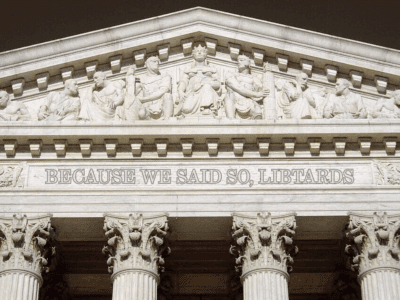NEPA in the Supreme Court — On the Eve of Oral Argument
Some thoughts about how the Court should define some limits on indirect effects.
We’re posting a revised and expanded working paper on the NEPA issues before the Supreme Court in the Seven Counties case, which is being argued tomorrow. The expanded paper will soon be available on the CLEE website here. We provide a detailed examination of how federal courts of appeal have wrestled with causation issues in NEPA, building on the points we made in our earlier blog post. Many courts have relied on the foreseeability test we develop in the paper (and that is articulated in NEPA itself). In our expanded paper, we discuss how to apply the test and analyze some cases where it may not apply.
Aggregate versus Site-Specific Indirect Effects
The revised paper explains in more detail how our test provides some significant limits on the scope of NEPA review because of foreseeability. In particular, foreseeability would limit analysis of what is known in NEPA as “indirect effects” in important ways. “Indirect effects” in NEPA refer to those effects that the initial federal action may trigger, but are later in space or time. A classic example is the development prompted by the construction of a new highway, something that has long been considered in NEPA review. This kind of indirect effects analysis is much more tractable at the aggregate level than at the individual level, and thus certain types of indirect effects are more likely to be foreseeable than others.
For instance, it is not feasible to predict, in general, how a particular parcel of land near the highway will be developed in five years, since that will depend on the motivations of the owner, the regulatory framework as applied by the relevant permitting body to that specific parcel, and more. But it is feasible to predict – given current regulations and economic demands in the area – a range for how much land might be developed, and the general location where that development might occur. As a general rule, for indirect effects, aggregate effects will generally be more tractable and foreseeable than site-specific effects.
“Small Handles” and Minimal Federal Involvement
The expanded paper also discusses some outlier situations where some courts have relied on the existence of subsequent regulatory decisions as cutting off causation and thus limiting the scope of NEPA review. One example would be a ruling that a decision to issue federal wetland permits for a part of a mining project does not require NEPA review of the impacts of the mining project as a whole, because that larger project will be permitted by another state entity. We show those cases can be better understood as either applying other NEPA doctrines (such as the “small handle” concept we discuss below), or are incorrectly decided. In general, the test we develop does align with most of the caselaw.
The “small handle” doctrine applies when the federal project is considering a permit for a small portion of a much larger non-federal action – for instance, a Clean Water Act permit required to authorize the crossing of a mile or two of waterways out of a pipeline project that is hundreds of miles long. There have been sharp divisions in appeals courts about whether the federal agency should restrict its NEPA analysis to the segment of the overall project that it is permitting, or examine the effects of the project as a whole.
On the one hand, the federal permit is a “but for” cause for the overall project, which cannot proceed without it. However, one can argue that applying NEPA to the entire non-federal action is a large expansion of the original regulatory system beyond which Congress might plausibly would have intended in this context. In the pipeline example, the permitting requirement applies to waterways, not to a pipeline as a whole.
Thus, again, the dilemma arises. The agency could either conduct the NEPA analysis of the project as a whole, producing information that it either could act upon (potentially contravening Congress’ intent as to the scope of the relevant regulatory program), or refuse to act on (making the NEPA analysis superfluous).
The issue in the “small handle” doctrine is one of extreme results. The federal agency decision is so small compared to the larger non-federal action that it raises the question of whether environmental effects are being made superior to other factors – for instance, federalism, or Congressional desire to constrain the scope of regulatory requirements. One can understand the “small handle” doctrine as an example of a “de minimis” exception to NEPA, where the federal action is so small it cannot support the broad expansion of NEPA review and consideration of environmental effects.
The “small handle” doctrine thus should be narrowly construed, and the codification of the doctrine in the 2023 NEPA amendments appears to do so, limiting it to situations where there is “no or minimal” federal funding or involvement such that “a Federal agency cannot control the outcome of the project.” Small handle problems can better explain a number of the court of appeal cases where courts sought (improperly in our mind) to limit NEPA review based on causation being cut short by decisions by other agencies.
* * * * *
This additional analysis makes clear important limits on NEPA scope that we think address at least some of the concerns that have (appropriately) been raised about ever-expanding NEPA review and the risk that it will hamper efforts to develop needed infrastructure.
Reader Comments
One Reply to “NEPA in the Supreme Court — On the Eve of Oral Argument”
Comments are closed.







Estimating mid and long term project induced private development has never been done well. The original intent of nepa was to inform state and local governments of the possible impacts that their actions such as zoning regulations or infrastructure could mitigate.